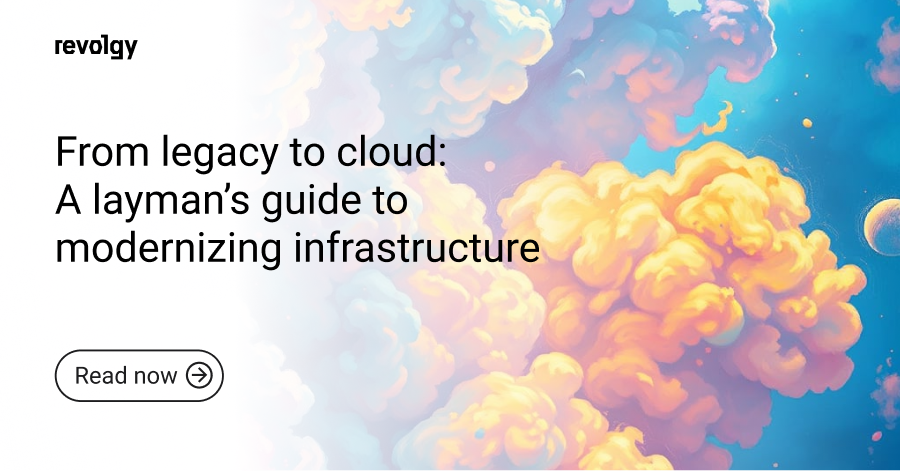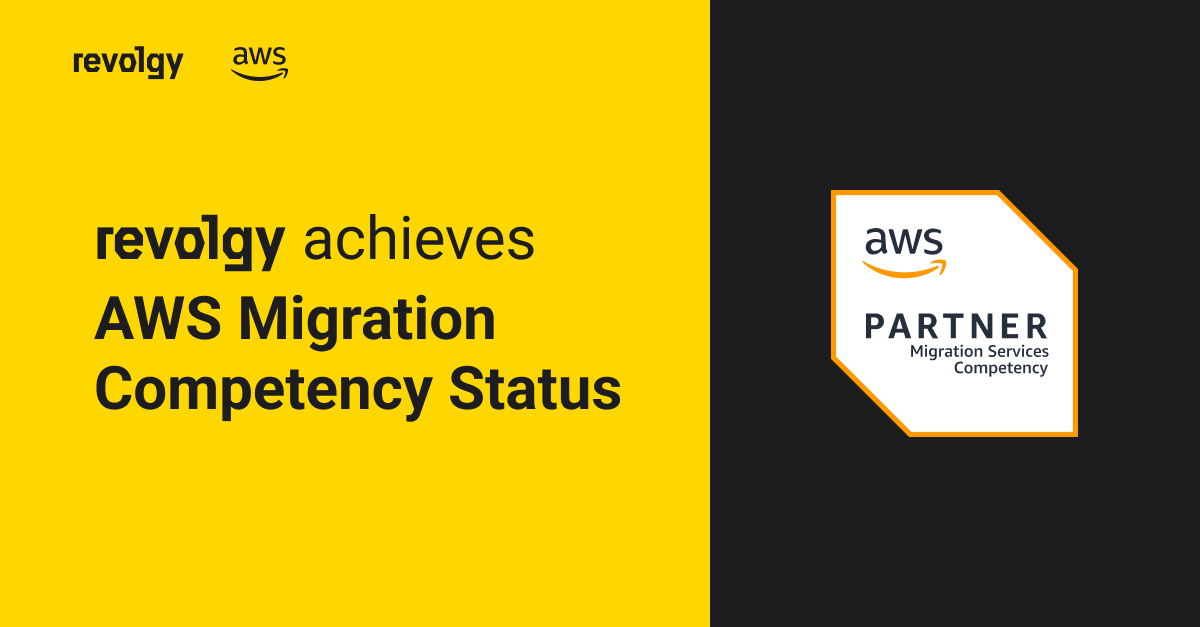Professional Services, Managed Services, Inside Revolgy
110% peace of mind | Revolgy DNA
Hi, my name is Jan, and I am part of the Operations team at Revolgy. My colleagues and I solve monthly several hundred customer requests.
Revolgy DNA
In Revolgy, we have a DNA code as an outcome of company-wide brainstorming sessions. Revolgy DNA is a way to daily remind ourselves what is our direction and how we act. It consists of:
- We aim for 110% customer peace of mind.
- We want to know your story better, to serve you better.
- Expand the possibilities of your technologies with Revolgy.
I am part of the operations team. Our goal is to focus on customers and make sure they are happy, informed, and able to use their technologies to the maximum. You might have guessed it, the DNA pillar We aim for 110% customer peace of mind is most important for our team.
Maybe peace of mind does not sound particularly compelling, but we strive to make our customers calm. Therefore customers can focus their time and energy on their business. Let me show you three ways we make sure our customers have 110% peace of mind:
Customer is always right informed
When customers approach us with a request or an issue, multiple scenarios can happen. It might be a routine change or setting we can resolve requests within one well crafted and specific message.
Secondly, we could encounter more serious topics or issues we have not faced before. In that case, we could investigate, assign a request to a colleague or work with colleagues from Google.
It doesn’t matter what happens behind the curtain. We inform customers with simple messages to manage their expectations. It is our goal to have customers who know at all times what to expect next.
Honesty is the best policy
Nowadays, there is a huge number of apps, services and ways to work with cloud technologies. Even services of Google are not only Google search, Youtube and Google Workspace (previously known as G Suite).
Have you heard about Google My Business, Google Classroom, Jamboard, Google Ads, Google Analytics, Google Pay, etc.? You can find 50+ Google services.
Let’s be honest. We could provide you basic service for every service or outstanding service for a selected few services. Yes, we went the second route by focusing primarily on Google Workspace, Google Cloud Platform and AWS.
Sometimes customers ask us about, for example, Google Ads, and we have to admit that it is not in our scope. Therefore we provide suggestions and contact for official support of that selected service.
Elevate customers through education
Customers often ask us how to set up a specific service or how to fix it. The easy way how to address these requests would be to simply say what needs to be done:
We might say, "Go to this link and click ON and then SAVE.”
Even thou this solution is most time-efficient, it is very linear. Customer’s knowledge and skill would stay the same, and next time we could get very similar or the same request.
Therefore we aim to explain to our customers how certain features and services work by using simple language anyone can understand. Firstly we explain what a specific setting does and why a customer should change it to get result X. Then, we give our customers a small roadmap on how to perform the change.
We do not perform changes in the settings of accounts of our customers. Only exceptions are specifically crafted contracts where we have a clear scope of actions we can perform on behalf of a customer. Those contracts are premium paid services.
Educating customers takes more time and energy now and results in better and longer cooperation.
It might take up to 4 months to onboard a new employee.
When you work with a partner, the member of their team can be shortly allocated to you if you need it. They have the required skill set and are backed up by senior certified solutions architects and experts directly from the vendor.
What if providing support goes south?
What if we do all of our magic (informing customers, setting up clear expectations, aiming to educate customers), but it is not enough?
Some of the technical issues are uncomfortable and hinder customers’ ability to work. For example, issues with Gmail, thus not being able to communicate and work at full capacity. Or not having access to some Google services at all because there is a huge outage.
We are people, both operations team members and customers (it admins) at the other end. It can happen that we do not understand each other and get frustrated. In such cases, we aim to go from emails to phone calls to understand each other better. If everything else fails, tapping out and inviting another team member into the conversation helps unblock the communication and find common ground.
How do we know we are at 110%?
After every request is resolved or closed, we ask the customer for his opinion. How likely would he recommend Revolgy to his peers and also ask for details (NPS)? Based on these ratings, we know how satisfied our customers are and can address any sub 110% situations immediately. We also look at the time it took us to resolve a customer’s request.
We do not take unhappy customers lightly and always investigate to see what happens. So we could prevent this situation the next time. We go through written communication and usually ask customers for a quick call or further details.
Based on our findings, we ask ourselves what we can do to prevent such a situation the next time. It can be further educating our agents, changing how we communicate or learning more about a particular service or something else.
Conclusion
Company mission, vision and/or DNA can often be top-down, but not in our case. Revolgy DNA came from the discussion and alignment of many Revolgians. Those three genes or Revolgy DNA are present at our weekly all-hands meeting, and we live them (similar to Googlers breathing Google Oxygen).
There are many ways to provide value to our customers and reassure them that they have 110% peace of mind. Today we have focused on options we believe in:
- Firstly making sure our customers are informed at all times.
- Secondly, set expectations of what topics we can assist with.
- Thirdly, educating customers to better understand cloud technologies and become self-sufficient.
- How do we react to troubles while supporting our customers?
- Lastly, by being proactive in understanding what went wrong and making changes to prevent it the next time.
Ensuring peace of mind for our clients starts with robust cloud security measures, a cornerstone of Revolgy’s comprehensive cloud security services.
And how do you help customers in your company?
FAQs
Q1: What is Revolgy DNA?
Revolgy DNA is a code created from company-wide brainstorming sessions. It serves as a daily reminder for employees about the company’s direction and how they should act. It is present in weekly all-hands meetings.
Q2: What are the three core principles of Revolgy’s DNA?
The three principles are:
- We aim for 110% customer peace of mind.
- We want to know your story better, to serve you better.
- Expand the possibilities of your technologies with Revolgy.
Q3: What is the primary focus of Revolgy’s Operations team?
The Operations team’s goal is to focus on customers to ensure they are happy, informed, and can use their technologies to the maximum. The team’s most important principle is aiming for “110% customer peace of mind,” which means making customers calm so they can focus on their own business.
Q4: Which technologies does Revolgy specialize in?
Revolgy focuses on providing outstanding service for Google Workspace, Google Cloud Platform, and AWS.
Q5: How does Revolgy handle customer requests?
Whether a request is a routine change or a more serious issue, the team informs customers with simple messages to manage expectations. The goal is for the customer to always know what to expect next.
Q6: What is Revolgy’s approach to customer education?
Rather than just providing a quick, linear solution, the team explains how features work in simple language. They clarify what a setting does and why a change is needed, then provide the customer with a small roadmap to perform the change themselves, fostering better understanding and long-term cooperation.
Q7: Will Revolgy make changes directly in a customer’s account settings?
No, the team does not make changes to customers’ accounts. The only exceptions are for premium paid services under specifically crafted contracts that provide a clear scope of actions that can be performed on the customer’s behalf.
Q8: What happens if a customer asks for help with a service outside of Revolgy’s expertise, like Google Ads?
The team will be honest and state that the service is not in their scope. They then provide suggestions and contact information for the official support of that service.
Q9: How does the Operations team manage difficult or frustrating interactions with customers?
If communication becomes frustrated, the team will suggest moving from email to a phone call for better understanding. If that fails, another team member is invited into the conversation to help unblock communication and find common ground.
Q10: How does Revolgy measure if it is achieving “110% customer peace of mind”?
After every request is resolved, customers are asked for their opinion and how likely they would be to recommend Revolgy (NPS). The team also tracks the time it takes to resolve requests. They do not take unhappy customers lightly and will always investigate to see what happened and how to prevent it in the future.



